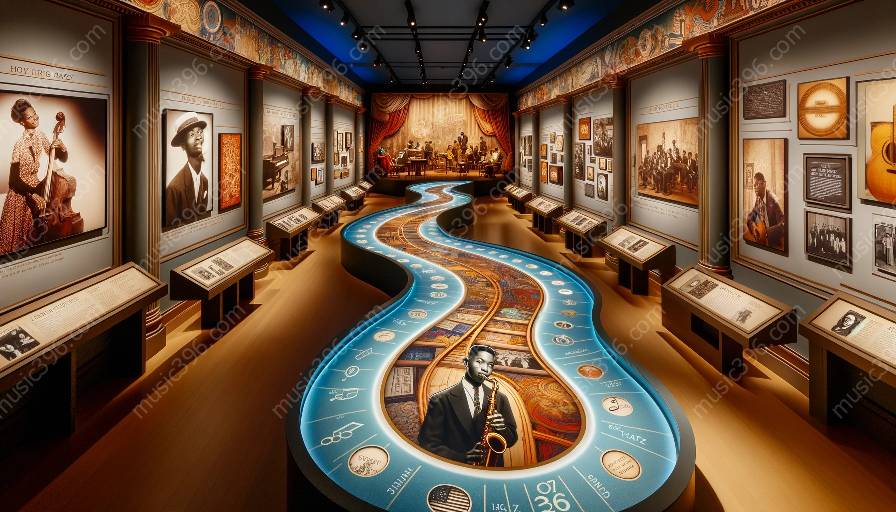Jazz fusion, a dynamic and innovative genre, emerged as a result of the fusion of different musical styles, such as jazz, rock, funk, and world music, during the late 1960s and early 1970s. The impact of jazz fusion on the genre's evolution has been substantial, ushering in a new era of experimentation and creativity in jazz. Its influence resonates through the wider scope of jazz, becoming an essential part of jazz studies.
Emergence of Jazz Fusion
The emergence of jazz fusion can be attributed to various social, cultural, and musical factors. By the late 1960s, traditional jazz found itself in the midst of a cultural revolution, as the music world began to embrace new technologies and methodologies. Concurrently, rock music was undergoing its own evolution, incorporating elements of jazz into its sound. Musicians and audiences sought a union between the improvisational nature of jazz and the energy of rock, birthing a new musical movement that would come to be known as jazz fusion.
Fusion of Musical Styles
Jazz fusion represents a convergence of diverse musical styles, combining the improvisational nature of jazz with the rhythmic drive and amplified sound of rock, the groove and funk of R&B, and the textures and rhythms of world music. Musicians from various backgrounds and disciplines came together to create a fusion of genres, resulting in a rich and multi-layered musical expression that resonated with a wide audience.
Key Innovators
Several key innovators played a pivotal role in the development of jazz fusion. Pioneering artists such as Miles Davis, Herbie Hancock, and Chick Corea pushed the boundaries of jazz by incorporating elements of electronic instruments, rock rhythms, and global musical influences into their work. Their experimentation and willingness to embrace new sounds and technologies paved the way for the emergence of jazz fusion as a genre.
Impact on the Evolution of Jazz
Jazz fusion's impact on the evolution of the genre has been profound and far-reaching. It introduced a new sonic palette to jazz, expanding its boundaries and attracting a younger generation of listeners. The fusion of musical styles broadened the horizons of jazz, facilitating cross-genre collaborations and pushing jazz into new creative realms.
Exploration of New Soundscapes
Jazz fusion prompted musicians to explore new soundscapes, incorporating elements from various genres and embracing technological advancements. The use of electric instruments, synthesizers, and studio effects reshaped the sonic landscape of jazz, offering a fresh approach to musical expression and composition.
Opening Up New Possibilities
The fusion of jazz with other genres opened up new possibilities for musicians, allowing them to blend traditions and experiment with different musical elements. It encouraged a spirit of eclecticism and hybridity within jazz, leading to the creation of innovative and boundary-pushing works that continue to influence contemporary jazz artists.
Role in Jazz Studies
Jazz fusion has become an integral part of jazz studies, offering a unique lens through which to understand the genre's evolution. It provides educators and students with a platform to explore the intersections of jazz with other musical traditions, fostering a deep appreciation for the diversity and fluidity of jazz as an art form.
Academic Inquiry and Analysis
Within jazz studies, the emergence and impact of jazz fusion are subjects of academic inquiry and analysis. Scholars and researchers delve into the historical, social, and cultural contexts that led to the rise of jazz fusion, as well as its influence on contemporary jazz practices. These studies contribute to a comprehensive understanding of jazz as a dynamic and evolving phenomenon.
Performance and Composition
Jazz fusion serves as a platform for performance and composition within jazz studies, allowing students to engage with diverse musical styles and techniques. It encourages experimentation and collaboration, nurturing the development of innovative approaches to jazz performance and composition.
Conclusion
Jazz fusion emerged as a result of the fusion of different musical styles, leaving an indelible mark on the evolution of the genre. Its impact reaches across the wider scope of jazz, influencing the sonic landscape, creative possibilities, and scholarly discourse within jazz studies. Jazz fusion's vibrant and dynamic legacy continues to inspire and shape the future of jazz, ensuring its enduring relevance in the ever-changing world of music.





























